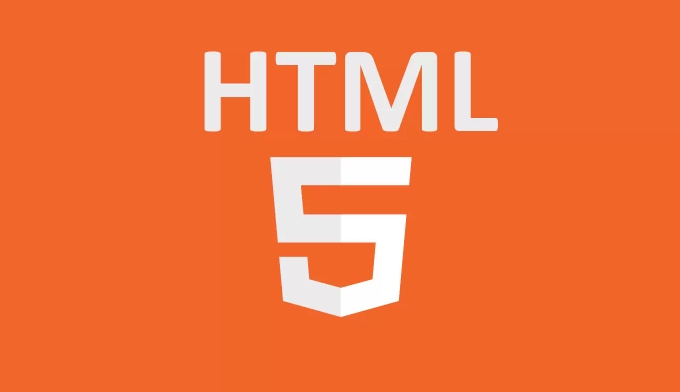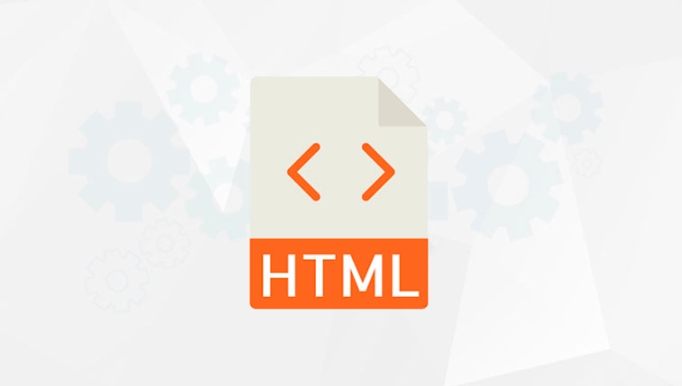What is the tabindex attribute and how does it affect focus order?
Jul 09, 2025 am 01:54 AMThe tabindex attribute controls element focus behavior. Negative values (e.g., -1) allow programmatic focus but exclude from tabbing, zero (0) includes the element in the natural tab order, and positive values define a custom tab order but should be avoided unless necessary. Use tabindex="0" to make non-focusable elements keyboard accessible, use tabindex="-1" to remove elements from the tab sequence but still allow scripting focus, and always test tab flow for usability and accessibility.

The tabindex attribute in HTML controls how elements can be focused, either through user interaction like tabbing or programmatically via JavaScript. It plays a crucial role in determining the focus order of interactive elements on a web page, which is especially important for accessibility and keyboard navigation.

How tabindex Works
The tabindex can be applied to any HTML element and accepts three types of values:
- Negative values (e.g., -1): The element can receive focus programmatically (like with JavaScript), but it’s not reachable via tabbing.
-
Zero (
0): The element becomes focusable and follows the natural document order when users tab through the page. - Positive values (e.g., 1, 2, 3): These define a custom tabbing order. Elements with lower positive numbers are focused first. However, using positive values is generally discouraged because it can confuse users by overriding the expected flow.
For example, if you have a <div> that acts like a button, setting <code>tabindex="0" makes it part of the natural tab sequence so keyboard users can reach it.
Focus Order and Tabbing Behavior
When users press the Tab key, browsers follow a specific order to determine where focus moves next. This is called the tabbing sequence, and tabindex directly affects it.
Here’s what happens based on different tabindex values:

- Elements without a
tabindex(or withtabindex="0") are added to the tab sequence in the order they appear in the DOM. - Elements with
tabindex="-1"are removed from the default tabbing flow but can still be focused via scripting. - Elements with positive
tabindexvalues are focused first, starting from the lowest number. If multiple elements share the same value, their DOM order determines the focus sequence.
?? A common mistake is assigning arbitrary positive tabindex values across a page, which can create confusing navigation flows. It's usually better to structure your HTML in a logical order and rely on tabindex="0" when making non-focusable elements accessible.
When Should You Use tabindex?
There are several practical use cases where tabindex is useful or even necessary:
- Making custom widgets (like div-based buttons or tabs) keyboard-focusable by using
tabindex="0". - Temporarily removing an element from the tab sequence (but keeping it visible) with
tabindex="-1", such as hiding a modal until needed. - Managing focus in dynamic interfaces — for example, bringing focus back to a triggering element after closing a dropdown or dialog.
Some guidelines:
- Avoid using positive
tabindexunless absolutely necessary. - Always test your tab flow to ensure it matches expectations.
- Combine
tabindexusage with appropriate ARIA roles and labels to enhance accessibility.
Final Thoughts
Using tabindex appropriately helps ensure that all users — including those who rely on keyboards — can navigate your site effectively. While it’s a simple attribute, its impact on usability and accessibility is significant. Understanding how it shapes focus behavior gives you more control over the user experience without breaking standard expectations.
That’s about it. Not complicated, but easy to misuse if you’re not careful.
The above is the detailed content of What is the tabindex attribute and how does it affect focus order?. For more information, please follow other related articles on the PHP Chinese website!

Hot AI Tools

Undress AI Tool
Undress images for free

Undresser.AI Undress
AI-powered app for creating realistic nude photos

AI Clothes Remover
Online AI tool for removing clothes from photos.

Clothoff.io
AI clothes remover

Video Face Swap
Swap faces in any video effortlessly with our completely free AI face swap tool!

Hot Article

Hot Tools

Notepad++7.3.1
Easy-to-use and free code editor

SublimeText3 Chinese version
Chinese version, very easy to use

Zend Studio 13.0.1
Powerful PHP integrated development environment

Dreamweaver CS6
Visual web development tools

SublimeText3 Mac version
God-level code editing software (SublimeText3)

Hot Topics
 Explain the purpose of the role attribute in ARIA.
Jun 14, 2025 am 12:35 AM
Explain the purpose of the role attribute in ARIA.
Jun 14, 2025 am 12:35 AM
ARIA's role attribute is used to define the role of web elements and improve accessibility. 1. Role attribute helps assistive technology to understand the functions of elements, such as buttons, navigation, etc. 2. Use role attributes to assign specific roles to non-semantic HTML elements. 3. The role attribute should be consistent with the element behavior and be verified by the accessibility tool test.
 HTML and Design: Creating the Visual Layout of Websites
Jun 14, 2025 am 12:39 AM
HTML and Design: Creating the Visual Layout of Websites
Jun 14, 2025 am 12:39 AM
How to create a website layout? 1. Use HTML tags to define the content structure, such as, ,. 2. Control styles and positions through CSS, using box model, float or Flexbox layout. 3. Optimize performance, reduce HTTP requests, use cache and optimize images, and ensure responsive design.
 How can you ensure your HTML code is readable and maintainable?
Jun 10, 2025 am 12:06 AM
How can you ensure your HTML code is readable and maintainable?
Jun 10, 2025 am 12:06 AM
Improve the readability and maintainability of HTML code can be achieved through the following steps: 1. Use semantic tags, such as, etc. to make the code structure clear and improve SEO effect; 2. Keep the code formatted and use consistent indentation and spaces; 3. Add appropriate comments to explain the code intention; 4. Avoid excessive nesting and simplify the structure; 5. Use external style sheets and scripts to keep the HTML concise.
 How do I stay up-to-date with the latest HTML standards and best practices?
Jun 20, 2025 am 08:33 AM
How do I stay up-to-date with the latest HTML standards and best practices?
Jun 20, 2025 am 08:33 AM
The key to keep up with HTML standards and best practices is to do it intentionally rather than follow it blindly. First, follow the summary or update logs of official sources such as WHATWG and W3C, understand new tags (such as) and attributes, and use them as references to solve difficult problems; second, subscribe to trusted web development newsletters and blogs, spend 10-15 minutes a week to browse updates, focus on actual use cases rather than just collecting articles; second, use developer tools and linters such as HTMLHint to optimize the code structure through instant feedback; finally, interact with the developer community, share experiences and learn other people's practical skills, so as to continuously improve HTML skills.
 How do I use the element to represent the main content of a document?
Jun 19, 2025 pm 11:09 PM
How do I use the element to represent the main content of a document?
Jun 19, 2025 pm 11:09 PM
The reason for using tags is to improve the semantic structure and accessibility of web pages, make it easier for screen readers and search engines to understand page content, and allow users to quickly jump to core content. Here are the key points: 1. Each page should contain only one element; 2. It should not include content that is repeated across pages (such as sidebars or footers); 3. It can be used in conjunction with ARIA properties to enhance accessibility. Usually located after and before, it is used to wrap unique page content, such as articles, forms or product details, and should be avoided in, or in; to improve accessibility, aria-labeledby or aria-label can be used to clearly identify parts.
 How do I create a basic HTML document?
Jun 19, 2025 pm 11:01 PM
How do I create a basic HTML document?
Jun 19, 2025 pm 11:01 PM
To create a basic HTML document, you first need to understand its basic structure and write code in a standard format. 1. Use the declaration document type at the beginning; 2. Use the tag to wrap the entire content; 3. Include and two main parts in it, which are used to store metadata such as titles, style sheet links, etc., and include user-visible content such as titles, paragraphs, pictures and links; 4. Save the file in .html format and open the viewing effect in the browser; 5. Then you can gradually add more elements to enrich the page content. Follow these steps to quickly build a basic web page.
 How do I create checkboxes in HTML using the element?
Jun 19, 2025 pm 11:41 PM
How do I create checkboxes in HTML using the element?
Jun 19, 2025 pm 11:41 PM
To create an HTML checkbox, use the type attribute to set the element of the checkbox. 1. The basic structure includes id, name and label tags to ensure that clicking text can switch options; 2. Multiple related check boxes should use the same name but different values, and wrap them with fieldset to improve accessibility; 3. Hide native controls when customizing styles and use CSS to design alternative elements while maintaining the complete functions; 4. Ensure availability, pair labels, support keyboard navigation, and avoid relying on only visual prompts. The above steps can help developers correctly implement checkbox components that have both functional and aesthetics.
 What is an HTML tag?
Jun 13, 2025 am 12:36 AM
What is an HTML tag?
Jun 13, 2025 am 12:36 AM
HTMLtagsareessentialforstructuringwebpages.Theydefinecontentandlayoutusinganglebrackets,ofteninpairslikeand,withsomebeingself-closinglike.HTMLtagsarecrucialforcreatingstructured,accessible,andSEO-friendlywebpages.






